The following story is an extended version of the cover story in the first issue of The Autostraddle Insider, Autostraddle’s new print zine. To find out how to get the zine — where you can see even more photos from this story — click here. All photos are by Emma Milligan, taken at a Queer Fight School event in Brooklyn.
When I saw the flyer for a Queer Fight Club in Pittsburgh pop up in March, it felt like an answer to questions that had been buzzing around the queer community here, a buzz that’d only gotten louder since November 2024. What can queer and trans people do to defend themselves —not just on a broader, legislative level —but against violence in their everyday lives?
Many people I knew were interested in fight training for self-defense, but also, most were completely new to and intimidated by the options out there. Martial arts gym fees can be steep, and many queer people just don’t have the room in their budgets. On the ground, it feels like interest in martial arts and fighting is exploding in the queer community. I spoke to an organizer of PGH Queer Fight Club, as well as three other queer/trans fight club organizers and a pro fighter from other parts of the country. They confirmed what I already sensed: Queer interest in learning to fight is skyrocketing, and much of that desire is tied to the current political environment, the Trump administration, attacks on trans rights, and a reaction to interpersonal violence that continues to disproportionately harm trans people.
Pittsburgh’s Queer Fight Club is a dual project, run by three co-organizers (two fight instructors and one administrative organizer) who have committed to running a Community Fight Club and a specifically Queer Fight Club. The Community Fight Club is open to all, straights included, and is a space that focuses more on the sport side of martial arts. When the Queer Fight Club starts in mid-April, it will be more explicitly self-defense focused. To discuss a need for self-defense for most queer and trans people is to discuss deeply vulnerable and traumatic situations, and doing so in a space made more close-knit via bonds of affinity at least protects us from the scrutiny of straights — or from having to explain ourselves to people who don’t have the same lived experience, no matter how good an ally they might be.
A RESPONSE TO VIOLENCE
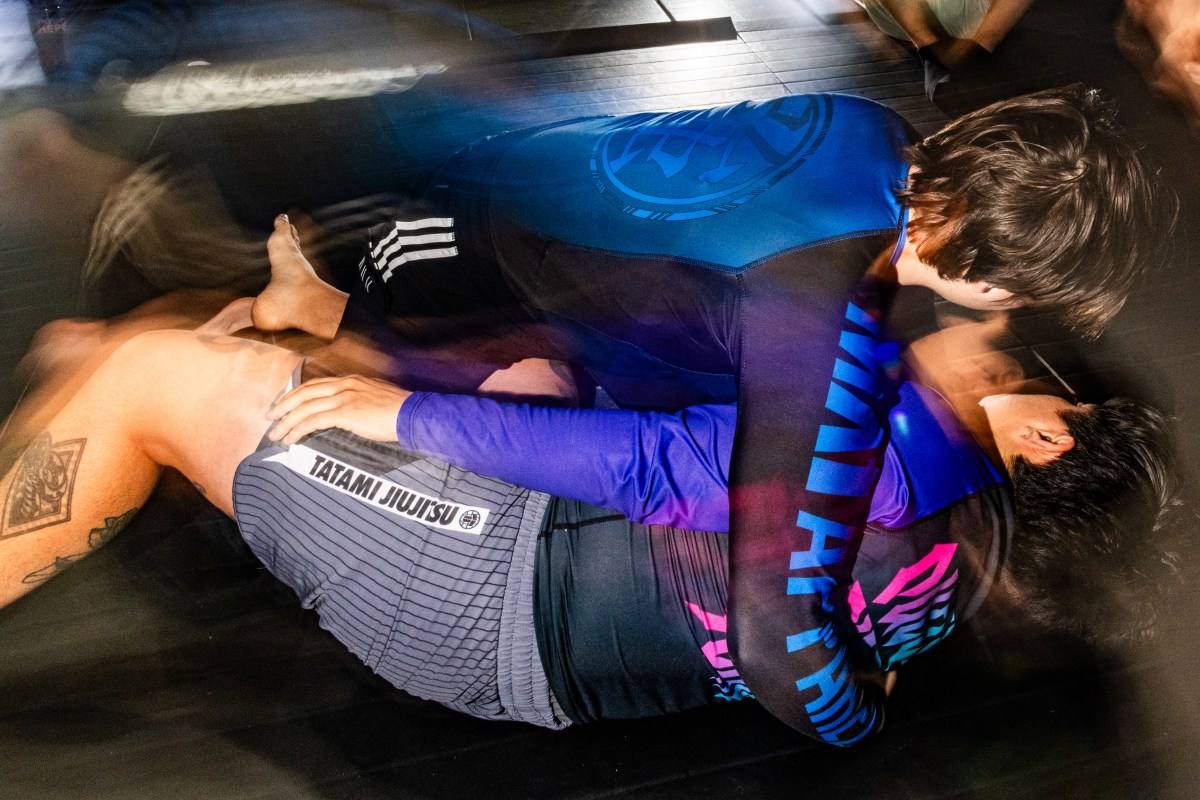
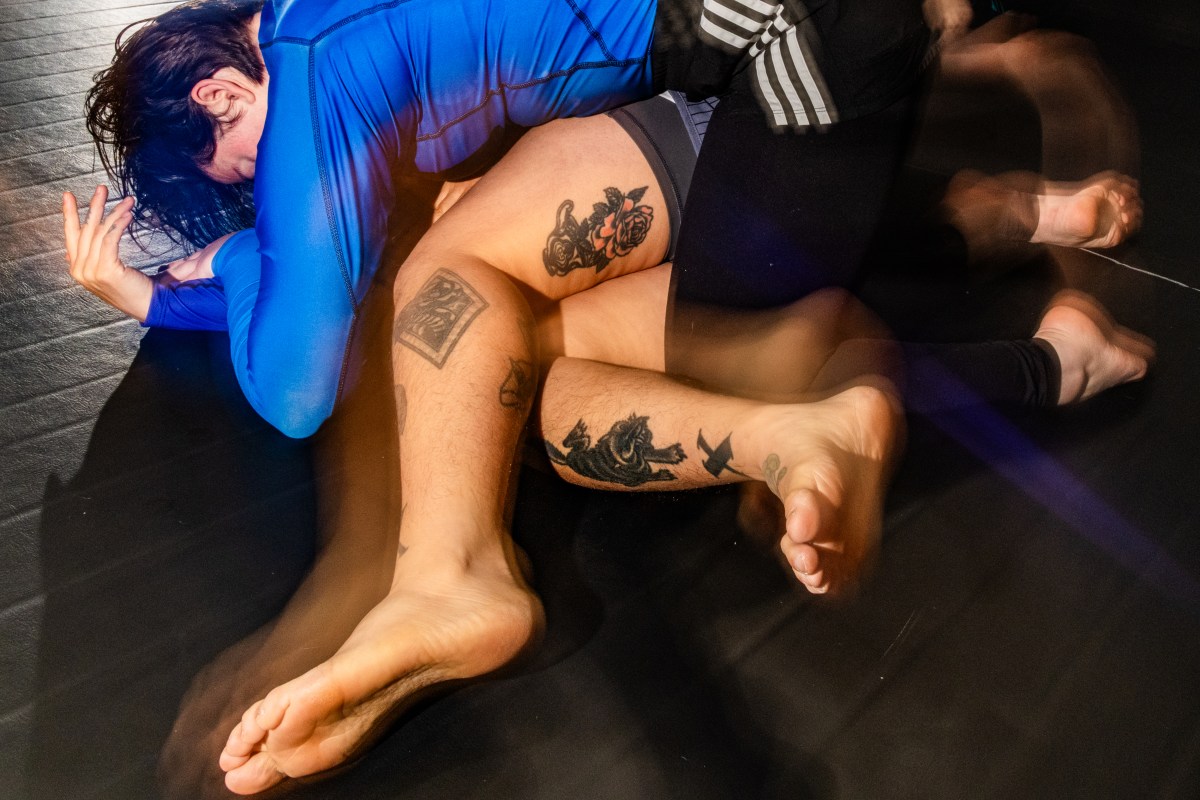
For Scout Tran, Executive Director of the Degenderettes — a nonprofit dedicated to teaching LGBTQIA+ people self-defense and martial arts as well as motorcycle maintenance — an interest in fighting also followed a need for physical self-defense, with getting into fights coming first, and more formal martial arts training following. In Oakland, CA in 2014, Scout was among a community of trans women, including many sex workers, who faced an increase in street harassment and physical attacks.
“We banded together in 2015,” Scout says, explaining that the queer fight clubs began with a community defense crew that formed as a response to the verbal and physical violence, with trans women committed to defending each other. At first “it was just play fighting,” where people would play fight at the mosh pit or outside a zine fest, but “none of us knew what we were doing.” So, in 2016, with the advent of the first Trump administration, fight club members went out to various gyms and schools to try as many different martial arts styles as they could. They compared notes and dissected the various martial arts styles, looking at what would actually suit their needs.
“We doubled down on Brazilian jiu jitsu under Shawn Keiser [because] with a lot of trans women and a bunch of sex workers, we very quickly filtered out all of the normal, martial arts stuff, all of the weapons based stuff, all the striking stuff, because we were like ‘this is not bedroom valid, this is not domestic violence applicable,’” Scout says. “I really stayed in boxing for a while because I loved it as a sport, but it was absolutely useless as a self-defense practice. Because there’s no way that a trans woman can throw a punch and end up better off than she was before, you know, like the consequences were always higher.”
Jiu jitsu, then, became the martial art of choice for the fight club’s members. Regular practice helped members build confidence, which they used in community defense. Scout recalls a story about when some jiu jitsu-trained folks were able to diffuse situations at a bar in San Francisco where people were getting too handsy with a trans girl bartender and trans women who frequented the bar. “The jiu jitsu people had no qualms about just like putting their bodies in there and just being like, ‘Hey, how are you doing? Do you want to fondle me instead of that girl?’ because they just spend like five days a week aggro-cuddling other people,” Scout says. “So it’s like nothing for them to just walk into the arms of some giant dude and be like, ‘Hi, you know I’m here now you have to deal with me, now,’ and that’s just like the first step for ejecting one of those people from a bar is getting one of our crew into their literal hands, right?”
The club also formalized verbal and social techniques into their curriculum, prioritizing a focus on their real-life self-defense needs. While the club certainly began because of street harassment, the practice evolved to include self-defense training that could be used at home, in the bedroom, with clients for the sex workers in the group — all of this with a mind toward the way carcerality disproportionately impacts trans people,sex workers, and people of color. “And then we wrote a curriculum for social manipulation…We had to write the curriculum ourselves from scratch,” Scout explains. It is written down nowhere else, but I would argue that none of this stuff was being made up. It’s all just like taken from folk self-defense practice.”
Degenderette’s “social manipulation” curriculum includes discussion of techniques for disarming attackers with femininity, to unsettling and shaming them, to increasing their consciousness of your humanity via specific verbal techniques, to bluffing about having backup nearby. The curriculum is accessible for free online.
Scout has since moved to Portland, OR, where ey’re co-running the Portland chapter of the same club, which is hosted at Unicorn Jiu Jitsu, while the Oakland chapter continues to operate and train under the Degenderette’s umbrella out of the gym, Misfit Combat.
“Self-taught martial artists are not a thing. It’s a made-up thing from the 80s, except that I am a self-taught martial artist,” says Alana McLaughlin. Alana professionally fights as Lady Feral and is the second ever trans woman to compete in MMA in the U.S. She’s the only trans woman to compete since Fallon Fox retired.
Alana tells me of her childhood spent as “a skinny femme queer kid in South Carolina in the 80s and 90s.” She was always drawn to fighting and martial arts, inspired by Bruce Lee’s movies and writings. Bruce Lee developed the hybrid martial arts style, Jeet Kune Do, in order to fight in ways that worked practically in real-life scenarios. UFC President Dana White has called Bruce Lee the grandfather of MMA (Mixed Martial Arts), because he broke from more traditional, stringent martial arts forms and focused on encouraging fighters to use the techniques that worked best for them, to blend from different martial arts practices. It’s no surprise that this approach, which Lee tested in street fights on the rooftops of Hong Kong, spoke to Alana, who’s developed an eclectic approach to fighting over the years.
She recalls fighting back against her bullies for the first time at just eight years old, when two boys ganged up on her, and she “took a physical bite out of Toby’s leg and spit it out at him.” There was always tension between knowing she was a trans girl and knowing she was a fighter, and being both encouraged to fight and, at the same time, punished for sticking up for herself. “After the two bullies ran home crying, my parents whipped me long enough to make sure the angry parents outside could hear it — even though they told me to fight back and stop making myself a target for years. And then they told me they were proud of me.”
Alana was aware of UFC when it started in the 1990s but didn’t have access to VHS tapes until later. Still, she leaned into learning to fight any way she could, both because of the “self-defense aspect” and because she felt it helped her stay closeted. Alana went on to join the Army and serve in the Special Forces. “Special forces has a reputation for being good hand-to-hand fighters, and most of the time they don’t get training…but you also have to consider a lot of special forces soldiers are also self-selecting for that; it’s guys who know how to fight who are going into it in the first place,” she says. “Despite the guys on my team having more official training than I did, I was recognized as the person on the team who was the fighter. At the time, I was pretty self-loathing, and I was taking a lot of risks, and one of my hobbies was literally going and getting in bar fights. I don’t think they actually had a pool going, but they joked about what injuries I would have when I showed up on Monday after the weekends.”
After Alana left the special forces, Fallon Fox encouraged her to pursue pro fighting, and she won her debut and only fight in 2021. Recently, she fought at QT III, a queer and trans fight tournament in Seattle that took place in March. To Alana, queer fight spaces offer a place for fighters to work on their skills, but they’re no substitute for mainstream competitions when it comes to money. The key thing with queer fight clubs and tournaments is that it’s mostly for the love of the sport and out of necessity, as opposed to paid professional work. Like so many queer and trans people, Alana and other highly-qualified fighters like her are denied fights. Alana’s only had one UFC fight because promoters won’t match her with another woman, despite the fact that her opponent — Celine Provost — nearly beat her, a fact Alana showcased openly with her bruised face post-fight. There weren’t any hard feelings either. The two even had breakfast together the next day, but bigots can’t get past the idea of a trans woman fighting a cis woman, even if they’re well-matched in strength and stature. This attitude permeates fight culture, and it prevents many queer and trans people from formally entering the sport or sticking with formal training — so queer and trans martial would-be fighters have taken a more do-it-yourself route. As Alana has joked, self-taught martial artists are a thing of 80s movies, and yet here she is as a self-taught martial artist. Like the folks starting these queer fight clubs around the country, she had to take matters into her own hands.
Mylo runs Queer Fight School, located in Brooklyn. They tell me of a time a family member became violent with them —how it happened not once, but again — and also of the systemic violence they regularly encounter as a Brown trans person. “I just remember thinking like I feel scared in this moment, and I don’t ever want to feel scared again,” Mylo says. “Of course, that’s not a realistic goal, to never feel scared again, but I knew I wanted to do something, to feel empowered and feel like at least this fear was generating something.”
So, Mylo found a Muay Thai gym in Brooklyn and started training. They focused on Muay Thai for a year and a half before zeroing in on Brazilian jiu jitsu. Then they started teaching their own classes. “I just wanted to see more people like me in the gym,” Mylo told me when I asked how they got started teaching classes. In 2018, Mylo started taking Queer Fight School around to different parks, with a focus on Muay Thai. As Mylo moved into focusing on Brazilian jiu jitsu, the classes also shifted, and now the focus is almost entirely on jiu jitsu. They also have a practice space these days, courtesy of Haven Boxing, a boxing gym run by two women of color.
Like the rest of the queer fight clubs featured in this story, Queer Fight School is completely free to attend (tournaments and camps discussed have fees associated with them, but also a number of scholarship and sponsorship options). “The classes I teach at haven, they’re very much geared towards beginners and folks who are newer to jiu jitsu so both of these things kind of help allow for someone who’s interested to both acquire skills, and implement and test those skills and kind of see where they’re at.”
CREATING SAFE QUEER/TRANS FIGHT SPACES
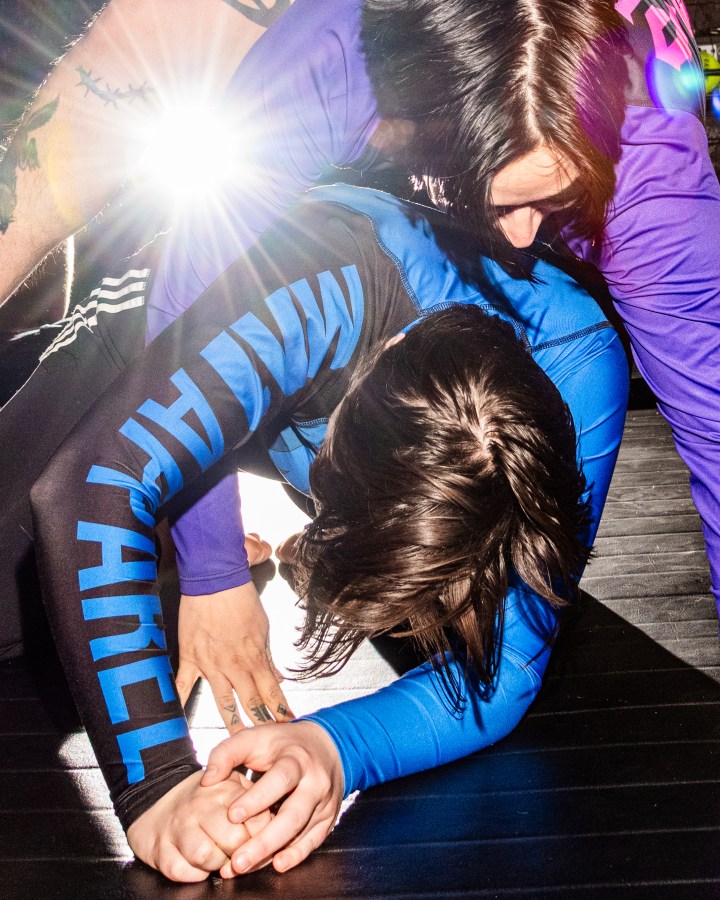
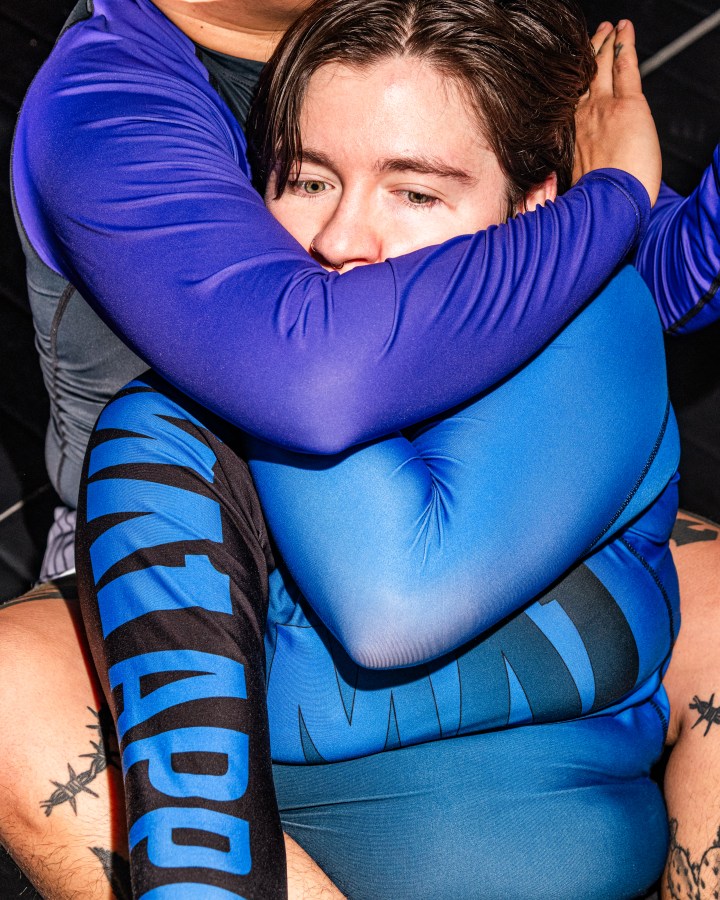
Space is crucial. Finding the right spaces is one of the biggest hurdles for queer fight clubs trying to get off the ground. For the most part, the clubs that have managed to continue operating have access to a friendly gym that is allowing the club to practice there free-of-charge (or in the case of DMV Fight Club, where the gym payments are sponsored by the Degenderettes).
Clem is starting the Queer Fight Club in Pittsburgh, whose fliers initially got me interested in this story, alongside another instructor and an administrative volunteer. She identifies unfriendly gyms and rightwing, toxic martial arts culture as barriers to entry for queer and trans people looking to train. The proliferation of unfriendly gyms, meanwhile, makes it harder to start our own clubs.
“It’s been a difficult process…I started a small queer fight group when I was living in Athens, Ohio,” Clem says. “I had a good experience. It was fun. I had a couple people come by. It was hard to maintain both a physical space and a weekly structure.” Clem explains that in a college town like Athens, it was difficult for people with so much going on to commit. There was never a permanent location for the club. “I had bought a mat I was taking to bars who would let me use their space when they weren’t open,” Clem says. “It was really unorthodox and odd…I was putting the mat down on the dance floor of a little punk bar, and it was very cool, but y’know.” Once in Pittsburgh, Clem started training at a gym, where they were able to talk to the owners and gain access to the space for queer fight club meetings.
Cis men, practicing in jiu jitsu spaces can be aggressive, are often cops or cop-adjacent, rightwing, and not just uncomfortable to train and grapple with because they’re men, but also because the politics of the space back them up. At one point, a man who trained cops in firearms for work, dragged me across the floor of the gym by my jaw. I still remember his smug little expression when he half apologized for moving too fast for me to tap out.
Clem and I joke about how jiu jitsu class does sometimes feel like “designated getting strangled by cop-adjacent men time,” and while everyone can have different experiences in martial arts classes, it’s no secret as to why some queer and trans fighters may decide the space is too risky.
“In MMA, the politics are far right, like 95%…the Gracie family are fascists, openly, and have been since before Brazilian jiu jitsu,” Alana says of her time training in MMA gyms where coaches talked about her behind her back and she had to share space with rightwing fighters like Colby Covington, a MAGA supporter who was invited to Trump’s White House.
Gwen is one of the co-runners of Queer Fight Night in Seattle, WA. She loves training in jiu jitsu, but even with her years of experience and love of the sport, she’s still found the attitudes of other people in non-queer gyms can be dangerous. At the start of 2020, a man who she had previously bested one time before in class used a heel-hook — a move not allowed in most tournaments until you’re at an advanced level — on her during an open mat (essentially, open sparring time). “He did break my knee, and he wouldn’t look at me or apologize,” she says.
Sabrina started the DMV Queer Fight Club in Washington, D.C. at the same time as she was facing discrimination in the pro-fighting world. “I had my first pro fight, then found out I was trans a little bit after that, and I’ve been trying to combine the two since then,” she says. “I did want to continue training and continue fighting and trying to be a pro fighter, and as I’ve been trying to do that, it’s been pretty much impossible.” Once, a pro fight of Sabrina’s was canceled 10 minutes before it was set to start. “They wouldn’t let me fight unless I fought topless,” she says.
“After that, especially with how a lot of my cis friends in the martial arts community responded, it made me want to double down and get this queer fight club thing going, just so I could have more queer people to be in community with, and in martial arts community with,” Sabrina adds. She began to get the club off the ground in 2023, and it exploded in popularity in 2024, with twice weekly classes and up to 20 queer participants ready to fight.
FROM TRAINING TO TOURNAMENTS
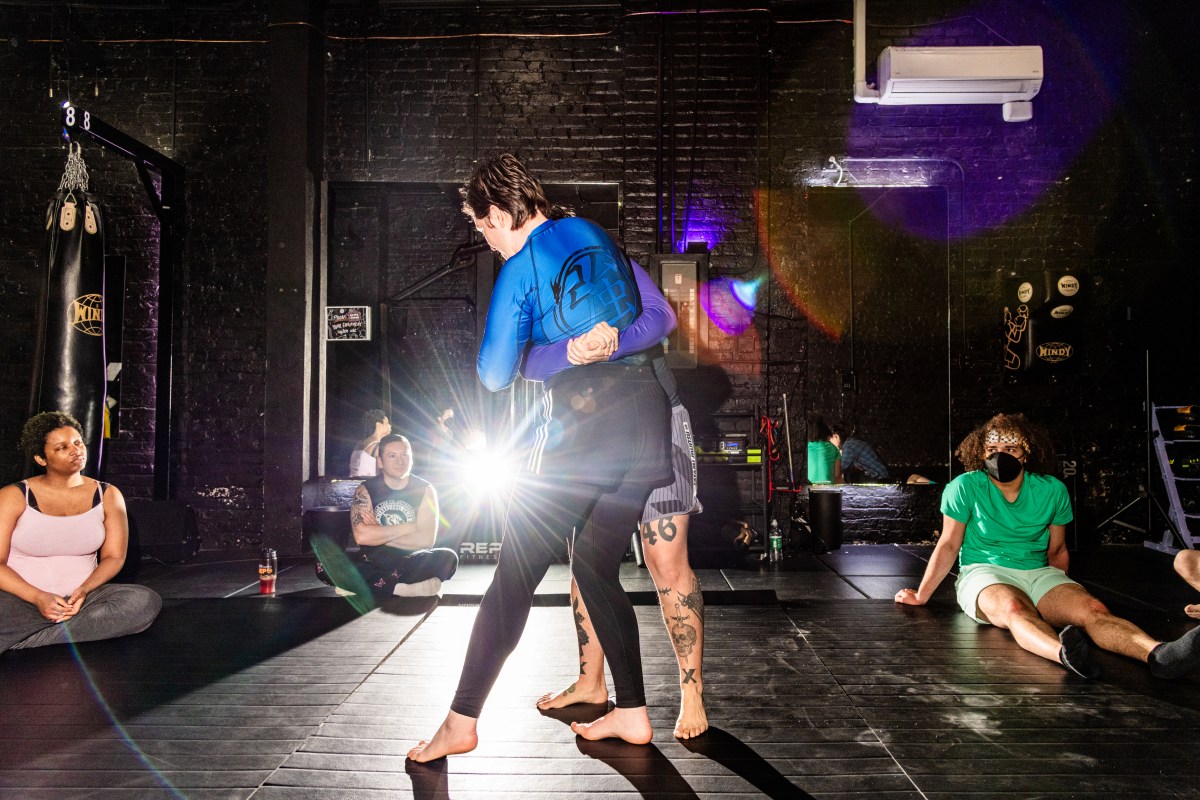
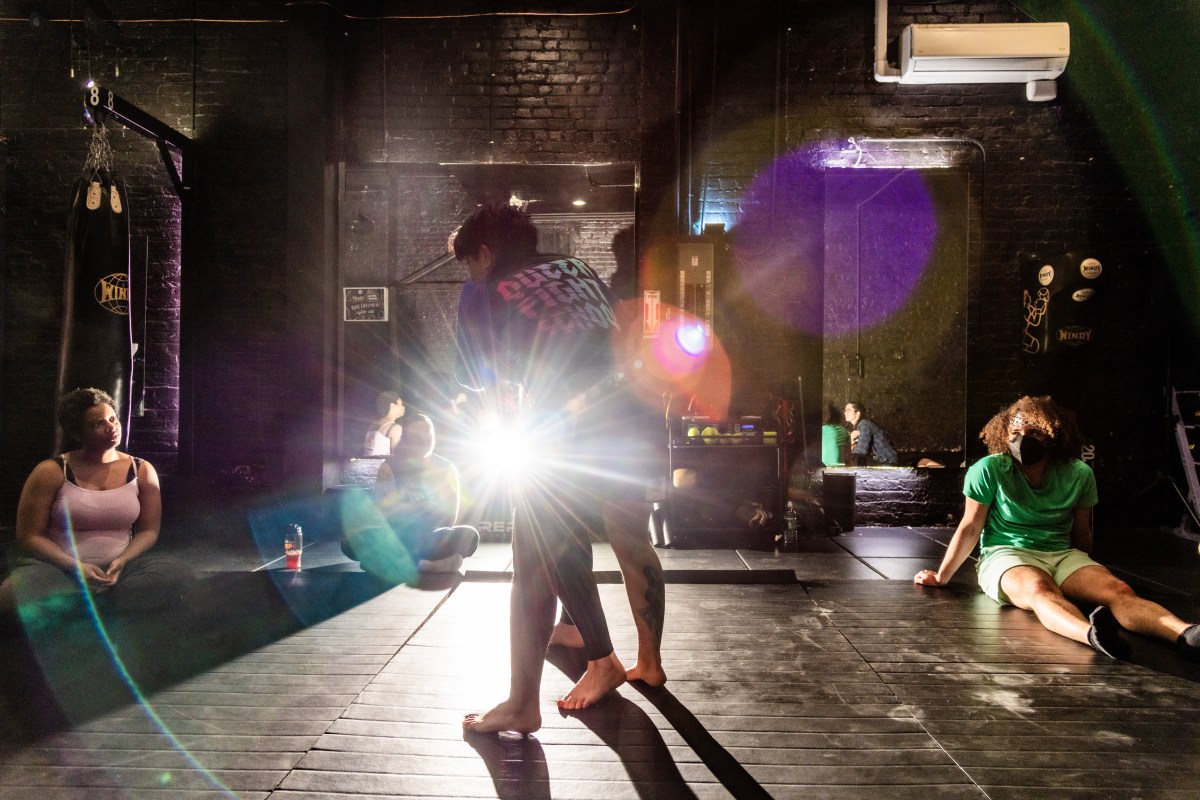
Both Gwen and Sabrina have now run queer/trans fight tournaments in Seattle and Baltimore, respectively. They know each other, too, having met at the Lez Roll Grappling Camp in Indiana. For Gwen, the first Seattle tournament started as her birthday party. “People were very stoked to have a competition environment that was more than inclusive, that was FOR trans people,” Gwen says of the first event, which was more or less thrown together in a month.
The most recent tournament, QT III, had competitors from 13-15 U.S. states and four countries represented. There were almost 300 people total in the gym spectating for Muay Thai, and 100-120 for jiu jitsu the next day. “Seattle’s great, it’s just in Seattle, that’s the only problem,” Sabrina says of organizing a tournament on her side of the country. The ecosystem and community already formed between the Degenderettes, Queer Fight Night Seattle, and DMV Queer Fight Club have helped the tournaments on both sides of the country get off the ground. Between sponsorships, info-sharing, advice, encouragement, and cross-promotion, “you really gotta have a team,” as Sabrina puts it.
Gwen couldn’t agree more: “The more volunteers, the better, and having defined roles for everyone.” As for considering forms and administrative formats, these things are often borrowed, tweaked, shared, and passed back and forth between the organizers of queer fight spaces.
For many, like Alana, competition is essential to growth as a fighter: “I don’t have the opportunities to compete in the same way other people do because I’m trans, and the thing is, with combat sports, the way you get better is not just from training, but from competition, and if you’re blocked from competing, it’s hard to improve.” By running tournaments, organizers create opportunities for queer and trans fighters to compete, to improve, and to build community. It’s a small community, and these queer and trans fight tournaments are new as of 2024, so it’ll be exciting to see where they go from here.
There are already growing pains. Some people in the community reported that in the most recent Seattle tournament, some fights seemed to go too far, to the point of injury to the fighters, without referees adequately stepping in. According to Clem, who watched the live streams and spoke to others who attended: “It’s been an interesting thing because I definitely see where so much of that urge comes from in the community when you have no outlet for competition and you want to feel how everyone else gets to feel…they get to do all the stuff, and it can build up a lot of frustration. But people organizing the tournament have to organize so, no matter how frustrated someone is, injuries don’t happen.”…I
Clem adds, though, that looking critically at our practices is part of finding our way as a community, part of unlearning toxic fight culture. “It’s far and away not the worst martial arts thing I’ve ever seen organized, but when it’s your own community, you want to hold them to a higher standard,” Clem says. “I want queer fight things that are being held around the country to not just be fun and cool, but also safer and smarter.”
TRAUMA-INFORMED TRAINING AND SAFETY
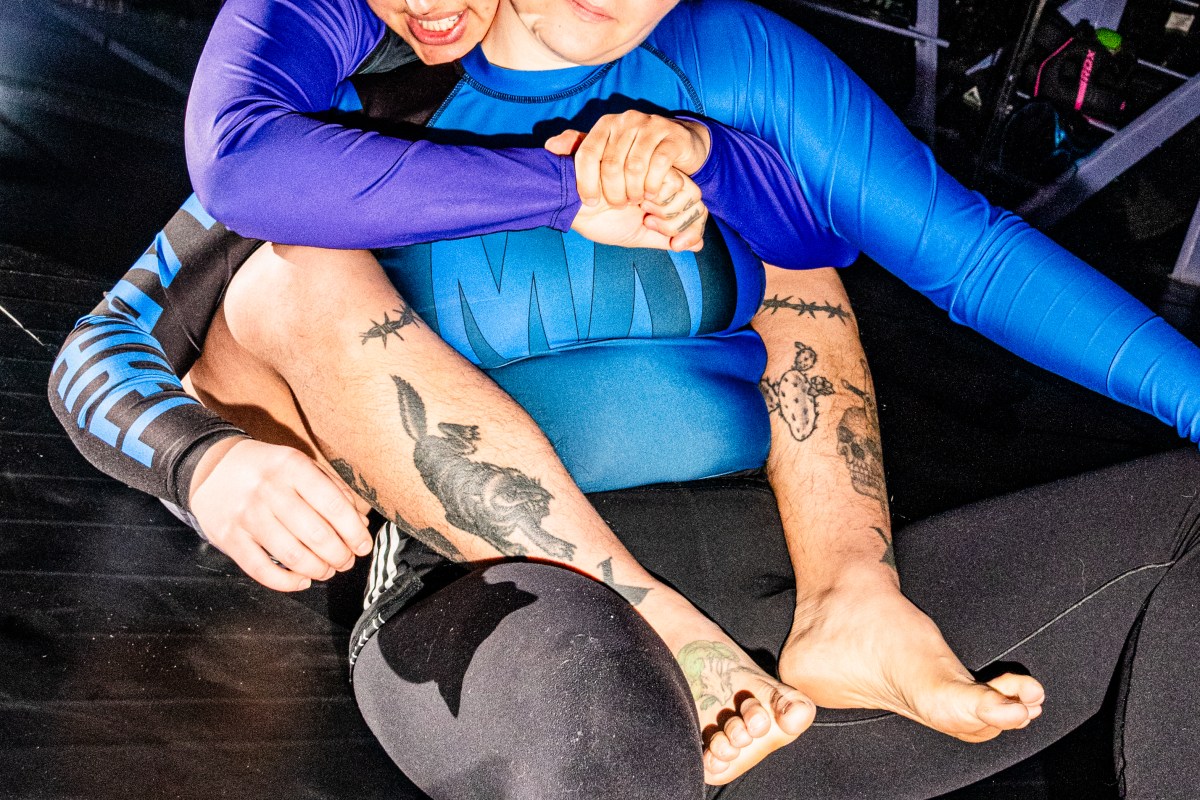
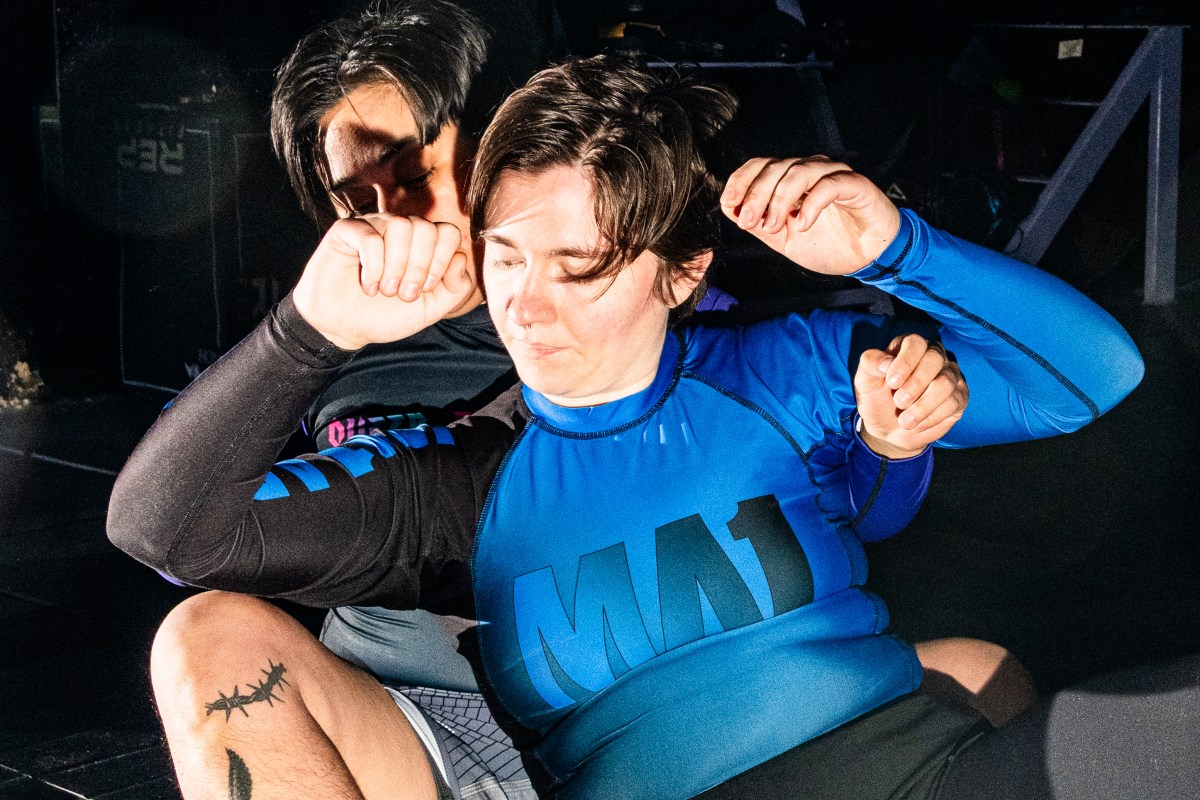
Part of running safer and smarter queer fight spaces goes beyond respecting each other’s identities and bodies and looking out for physical safety. There is also a serious need to be trauma-informed in these spaces.
Alana shares a time that sparring with a coach left her activated. “Because he was a cis dude from a toxic fighting background, he did not know how to deal with my crying,” she says. Alana apologized the next few times she saw him, and finally, “I baked him a fucking pie…I was trying to manage my own being triggered,and doing the emotional labor of trying to make this coach feel better about me crying in his gym.”
In a more “typical” gym environment, that’s so often how it works out. Queer and trans people become responsible for managing how they make others feel, even when they’re being retraumatized themselves. When we’re building things differently as queer and trans people, we have to remember that being pinned down, hitting or getting hit, or even having another person’s hand around a wrist can be extremely emotional experiences.
“It’s not possible to prevent it from happening, but it’s possible to have things in place to help make it better when it happens,” Clem says of her approach to students who get triggered by class. Clem and the other organizers of Queer Fight Club PGH actually reached out to a group of radical therapists and counselors, and a volunteer counselor will be available on-site at club meetings.
Pretty much everyone who is organizing a queer fight space agrees: The best way to learn to fight is to focus on fun, to play games. Not only do games aid learning, they also keep the environment light and allow students and instructors to compartmentalize discussions around heavier topics. “If you get too amped up, too much adrenaline in your system, you won’t actually retain information,” Clem says.
Mylo in Brooklyn has been studying the same thing, as well. They teach by asking participants to solve puzzles with their bodies, with an emphasis on the fact that people have different bodies, so there is no single one or right answer to a problem. They’ve been reading up on the science of learning with an eye towards always improving their teaching.
Scout’s classes always begin with paperwork and protocol — but it’s important stuff, like handling other peoples’ bodies respectfully, respecting pronouns, “how to tap out when you feel emotionally restricted,” not just physically restricted, and “how to protect yourself and protect your training partners emotionally.” They play games for the first 15 minutes, games that are tested and that trick people into learning concepts, and as is often an emphasis in Scout’s pedagogy, practicing verbal manipulation at the same time as physical movements. Then, Scout or one of the TA’s shows a martial arts technique, which, according to Scout, often just serves to make “people feel satisfied that they learned something today,” but “it’s the games that are more useful to people and teaching.” Scout also invites student-led teaching at the end of class, during breakout groups because many of the queer people present have skills of their own to share. “There was a German longsword person!” Scout also explained that ey place emphasis on the need for fighting instructors to personally have lived experience in at least two of the following three things: transphobia, racism, or whorephobia — because any instruction needs to be checked against these lenses. Scout wants instructors to ask, say, does a technique hold up if we look at it through the eyes of someone who’s experiencing racism? What about stigma related to sex work?
When I attended one of the Pittsburgh community fight classes, run by Clem’s collaborator, we began with a game. After introducing ourselves and warming up, the three of us and the instructor got right into playing. The object of the game was to tap your opponent on their trapezius muscle. Once tagged, that person moved out and the other person in the trio stepped in to play. We played the game first, then found out its learnings — which involved practicing stance, footwork, and keeping our guard up (as in boxing guard). Following the first round of the game, the instructor led us through some exercises to work on making minor improvements — and then we played again. This second time, with laughter, I rotated in and out of the center of the floor, tagging and being tagged by fellow queers, working on the very real skill that is Not Getting Hit In The Face, but in a way where if and when I see the folks in that class again, I’ll be delighted to say hello.
The first iteration of Pittsburgh’s Queer Fight Club was packed. It had gone viral and moved to an RSVP-only policy. We began with an introduction to the space and to the instructors, and then we moved on to the most foundational aspect of fighting: stance. Then, we played that same game from the community class.
I paired with a couple of newcomers. The second person, a history teacher, told me he was there because he’d “seen this sort of thing before,” referring to the current administration’s descent into full-on fascism. He accidentally hit me in the eye — which, to be fair, I felt bad about allowing past my guard — and while I recovered briefly, I had the opportunity to correct his assumption that he should beat himself up over injuring someone at fight club.
“You actually don’t want to injure your comrades during sparring,” I told him. I elaborated: sparring should be light, because you want to be uninjured and ready for competition, or, more practically, self-defense.
It was fascinating to see the number of people who’d never been introduced to martial arts before that day, putting themselves out there and trying for the first time. It took a stew of ingredients to get those queers in the room: rising fascism, the current administration, the premise of an all-queer space with queer instructors, masking required and a therapist on site and, of course, the fact that there were no financial barriers to entry. It will be interesting to see who sticks with the club and to witness the progression of this experiment. The beautiful thing about these new queer fight clubs is that they are breaking new ground: We don’t fully know where this will go.
BUILDING COMMUNITY AND MAKING OUR OWN WAY
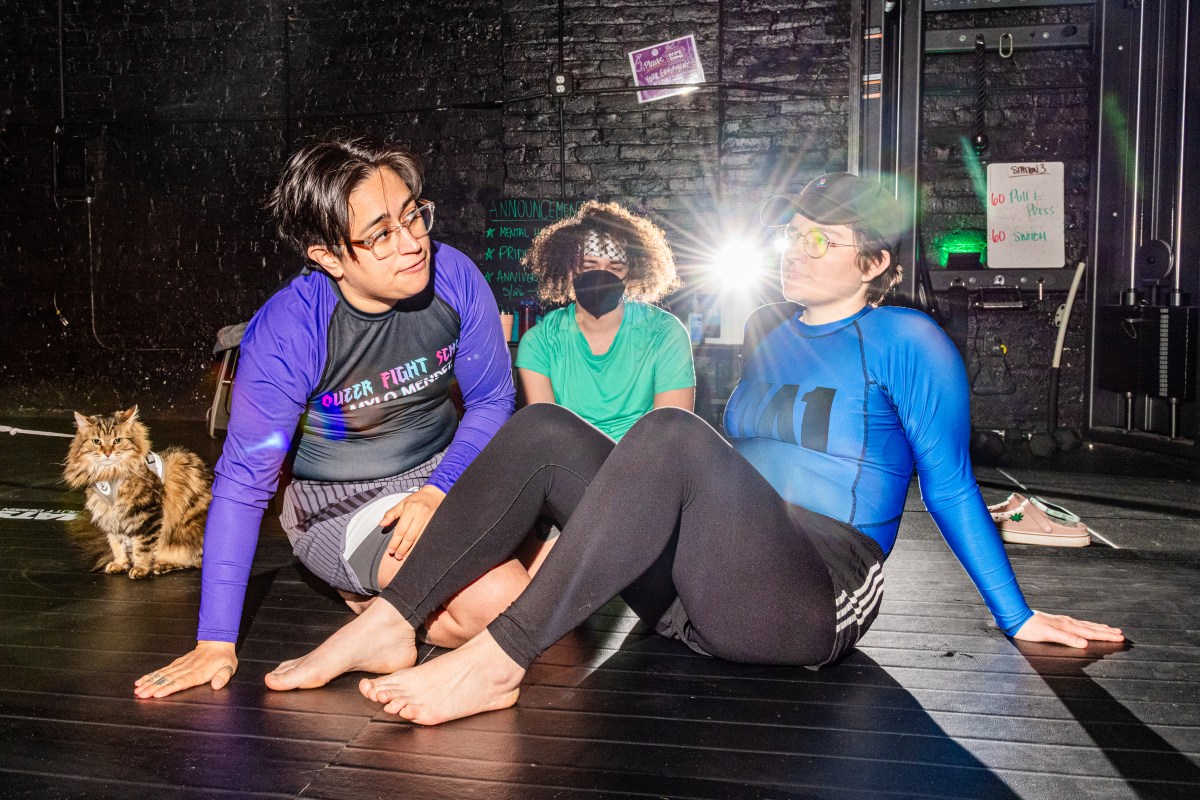
“It’s been nice to integrate myself into the queer community with martial arts. I go to places and everyone tells me they’re gonna come to fight club. They don’t but they tell me they will,” Sabrina says when reflecting on what she got out of running the fight club. I asked what her students came away with, “I’m perceived very differently than a lot of other trans people: a six-foot-tall dark-skinned, Black trans woman. I’m not gonna get a lot of people who want to fight me. A member told me the other day about how they got attacked. It’s good to have some familiarity with combat in that situation in order to have a proper response…Even if you don’t plan on fighting people…It helps you avoid a lot of fights, just by having that confidence that you’re okay with fighting. Not immediately having a fearful response, actually scares a lot of people away.”
“For me,” Gwen agrees, “it’s about feeling a sense of connection to your body, feeling like you have autonomy and the ability to use your body as a weapon. There’s defending yourself for sure, but that’s sort of secondary to knowing you could defend yourself. Also just building community. There’s a lot of people who come to the classes and who fall in love with the art and come to start training regularly at the gym.”
Sabrina, Gwen, Clem, Mylo, Alana, every trans fighter I spoke to said that the more trans and queer people are at a gym, the more welcoming the space becomes for members of our community just starting out with training, that, and the hope is that the culture of a gym can shift as cis and straight people get used to training alongside queer and trans fighters.
“I want this to be a training space for queer and trans people from all walks of life, not just able-bodied queer and trans people,” Clem says, “I want people with disabilities to come into the space and make sure what I’m doing is applicable to them.”
Clem says all the new queer fight groups need to strive to not be just like other gyms. “The conventional approach won’t work for us,” Clem says. “We need to focus our approach and the way we do things for our community to make sure that it’s applicable to our community, to make sure that it’s safe for our community, but if conventional training worked really well for the queer community, we would be doing conventional training, but we’re not, and there’s a reason.”
Scout in Portland emphasizes that perfecting technique isn’t actually the most important thing when it comes to fight training. “It’s more important that you’ve got a good training environment, you’re having fun, and you want to go back, your friends want to go back,” Scout says. “The people that I see training the longest who stick with it are the ones who have a training crew.”
“It’s just worth it,” Gwen says when I asked if people should consider training in fighting. “It changed my life. It changed so much about how I perceive everything and the world. I have such a strong sense of self from doing martial arts…it is really, really worth it.”
“People really want this,” Clem adds, “I anticipated having more people interested just by being in a city. I did not anticipate that in two weeks of having an Instagram page, I would have over 1000 followers.”
“I feel like especially in the current political environment, while attacks are ramping up on us, personally and politically and physically, it is important to learn to fight, but we are going to have to develop our own ecosystem for this, because we cannot go to most of the places,” Alana says. “How do you build this from the ground up without replicating the toxicity that is in the current fight system?”
Read a print version of this story in THE AUTOSTRADDLE INSIDER, which also includes more photos of Queer Fight School by Emma Milligan.


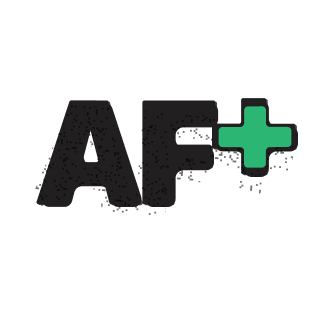
Amazing article and great to see a write up of queer fight communities, there’s also a flourishing one in London.
I would say the article overstates the value of jitsu grappling in a self defence scenario to the detriment of striking forms like boxing or muay thai. It’s important – as you state – to be a balanced fighter and have experience in both forms.
But also, importantly, BJJ flourishes on the ground, and that’s one place you want to AVOID in a fight. Going to the floor makes you vulnerable if there is more than one combatant, kicking you in the ribs or head gets so much easier, regardless of whether you have control over one other person.
Though jiu jitsu is useful in other contexts as mentioned, and is great for learning throws, locks and building confidence.
*I am aware this comment has big Dwight Schrute energy, it is based on martial arts training across several disciplines and a handful of real experiences.
I mean, I do *like* striking better. And, yes, there are plenty of standing situations where striking, parrying, moving without getting close enough to grapple would be more helpful — unfortunately, it’s just that many queer people find themselves needing to defend themselves in intimate / domestic situations, and in those cases, grappling is very useful. Thank you so so much for reading <3
Good on paper, unrealistic expectation for grappling IRL (on first sexual assault experiences).
Nico’s response means well. But it is lacking insight. And hopefully the lack of insight is because Nico hasn’t been a victim of domestic violence or sexual assault.
In incidents of domestic violence/sexual assault, grappling knowledge and practice will only go so far.
It’s great if someone can name and recognize the abuse when it is happening to them.
Unfortunately, experiencing sexual assault and domestic violence is a disorienting experience. The victim might disassociate rather than fight back, especially if they trust the abuser, like a partner for example. Once they have that trust, it makes grappling and beating the shit out of them seem like an inappropriate response, even though it should be appropriate.
Ie: the victim is being more respectful than the abuser. Surprise surprise.
It often takes a lot of time to sort through the feelings and recognize what has happened is abuse. At this point, grappling won’t do much good.
Since I’ve been a domestic violence victim multiple times, I will have no problem striking the living shit out of anyone who crosses me.
Keep up the fighting, but don’t forget that sexual assault and domestic violence isn’t just physical violence. It’s emotional and psychic as well.
Waiting to read this in the print magazine first but just saying i’m excited!
yayyyy!!! love this
That’s so exciting! <3
Brilliant article, thank you so much for sharing! Great to see at least one masked person in the photos – as queer people we are more vulnerable to long covid, and no amount of martial arts training will help you if you develop an incurable energy limiting illness. This is a form of community care which is accessible to everyone which too few alleged leftists actually give a shit about.
Thank you for reading and the point about community care <3
Really appreciated this article! I’ve done boxing for over a decade now, but part of the reason I’ve never tried much outside my home gym is that it’s a very diverse, supportive environment, and I don’t want to deal with toxic bro culture, let alone conservative bullshit.
I am slightly sad that at least on a preliminary search there were people asking about if a queer fight club exists in my city, but no actual examples of one.
If you’ve been boxing for over a decade, do you think you could start one??